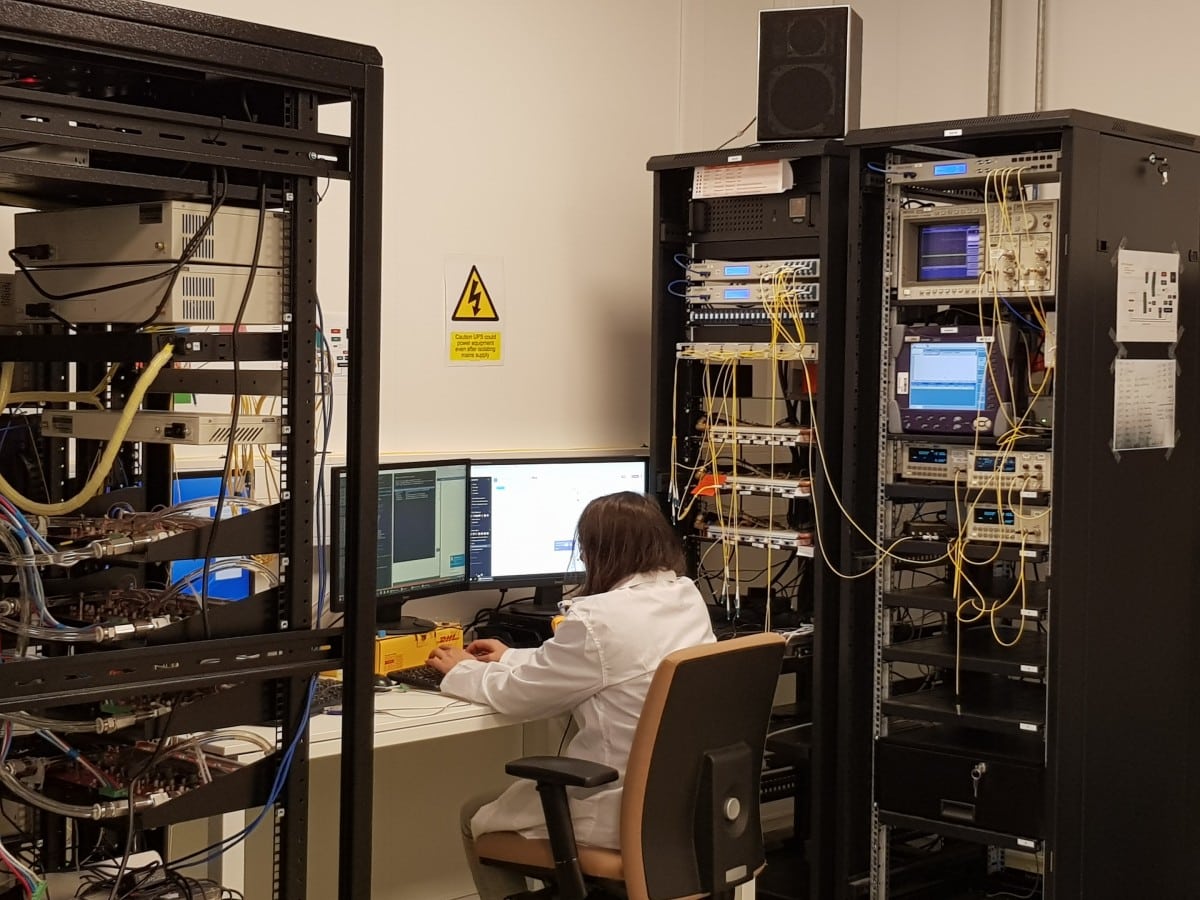
The Eindhoven-based photonics company Effect Photonics is becoming more and more of an international player. A doubling of the staff meant that the company had to move to a new and larger office. They found this space in the Microlab at Strijp-S in Eindhoven and have been working intensively on the further development of their optical chip. In doing so, CTO Boudewijn Docter is not losing sight of the future.
As the name suggests, Effect Photonics is involved in the field of photonics. They make an optical chip that is contributing to the 5G network of the future. The aim is to make the connections even better and faster. Effect Photonics took part in an investment round in order to continue to develop the technology and to keep searching for new applications. An increase in the number of staff was necessary to ensure that this could be properly managed. “We want to be able to get started as soon as the investments are completed. Personnel in the electronics and telecom sectors are very often hard to find,” Docter explains. “That’s why we started looking on time. This also gives us more time to allow these people to integrate properly into the company.”
A new and above all larger office was an absolute must. Microlab turned out to be the perfect place. “In ten years time, we have grown from a small office on the TU/e campus where there were three of us, to this office for sixty people. It is an ideal place with separate laboratories and enough space for everyone,” says the CTO.
Faster connections
A lot of hard work is being done on the chip with lighting technology which the company started working on around ten years ago. They are able to integrate several functions onto the chip. ” This allows better use to be made of the capacity of fiber optic cables because you can send multiple light beams through a cable at the same time,” says Docter. According to him, this could be ideal for long-distance networks which have cables lying at the bottom of the ocean. “The cost of the technology is then relatively low because it can be shared by the many parties who use it.”
The optical chips can also be used in mobile networks. “It works a little differently there because a lot of phones use transmitter mast cables. That connection needs to have a slightly higher bandwidth,” he explains. “We can integrate the techniques used in long-distance communication onto a chip. This enables us to offer more speed at a lower price.”
According to Docter, this technique is not only suitable for use in mobile networks, but also in data centers. “We are also able to connect data centers this way. This is necessary because the data centers of Facebook and Google, for example, are expanding all the time. On the other hand, data centers can be easily decentralized so that several smaller data centers are created. This provides faster connections for users because there is always a data center closeby. This is very useful in times of self-driving cars and smart cities.”
Automated production
According to Docter, these are a number of conceivable applications for the chip. The company is gradually working towards these. With the money from the investment round, Docter wants to do two things: “On the one hand, we want to scale up the production of the chip that we have recently developed. This requires more efficient production, for example through automated testing of the chips.” According to him, this still poses a number of challenges. “Of course, we want to make sure that the product that is delivered to the customer is good. In this case, chips that are not as good must be automatically filtered out of a batch. On the other hand, of course, we don’t want to throw away any good products either. So the system has to be very finely tuned.”
At the same time, the company will also test their own chips for reliability. ” We are going to put some chips from different batches through a stress test. This means that we test whether the product still works under extreme conditions such as high temperatures or humidity,” the CTO explains. “This is to see if the chip really works under these conditions. We can also use this to determine how long the product will last under normal conditions.” According to him, the prerequisites of a chip can differ per customer. “This has to do with the role that a chip is given for a customer, not to mention how cost also plays a role, amongst other things.” According to Docter, these tests are all steps that the company still has to take in order to be able to bring its product to the market.
The next generation
Aside from putting that one chip on the market, Effect Photonics devotes a great deal of attention to the next generation of chips that it wants to develop. “The basis for this is optical chip technology, but with more functionality and performance. In addition, we also want to further develop the components surrounding the chip, such as the electronic control system and the connection to fiber optic cables. The main goal is to make the chips work even faster, of course. As, for example, we are able to transfer light from the chip even better and more easily into the glass fiber and vice versa.”
Balance between market and research
It is very important for the company to find the right balance between bringing its existing products to the market and developing new products. “It often takes three to five years before a product is available on the market. So if we don’t start new products now, we’ll be too late in five years time,” says Docter. “Our technology is also very well suited to future applications. The 5G network is very important for various upcoming techniques. It is not only used for your mobile phone, but also for self-driving cars, for instance. Our chip can help create that amount of bandwidth.”
In order to meet the demand of potential customers, the company must continue to focus on the future and look for new opportunities for the use of photonics. Although according to Doctor, that’s not always easy. “If there’s a problem on the production line, it’s very tempting to ask a researcher to help. After all, they are working on a product that may not even be available on the market for another four years,” he says. “But that’s not so smart, as the products that are currently being developed will be very much needed in ten years time. If we don’t develop these new products, then that will be done by another company who will catch up with us. That is not what we want, so we have to make well thought-out decisions. It is very important to look towards the future of the product and of our company.”








